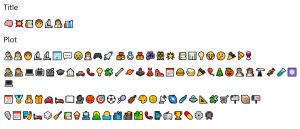In redesigning my “What’s in Your Bag” writing, I chose to incorporate an audio mode to enhance the multimodal nature of the piece. I converted the text into audio format using an online tool. The inclusion of audio mode captured the nuances of tone, inflection, and emotion that are often lost in text.
One significant benefit I encountered was enhanced engagement. Supported by New London Group (1996)’s advocacy for integrating multiple modes of meaning-making to address the diverse and dynamic nature of contemporary communication, the emotional resonance provided by voice modulation, pauses, and emphasis (a) the content more dynamic and engaging and (b) enhanced the emotional and experiential engagement with the content.
Another significant benefit of this redesign was supporting diverse learning preferences. By converting the text into audio, the piece would engage listeners in a different manner, making the content accessible to those who might prefer auditory learning or who might be visually impaired.
The New London Group. (1996). A pedagogy of multiliteracies: Designing social futures. Harvard Educational Review 66(1), 60-92.

